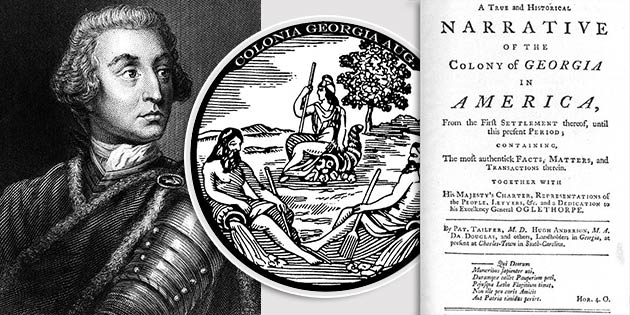By Jonathan Frazier
Many don’t realize that slavery, under the direction of James Oglethorpe (1735), was originally banned in Georgia. Legislation would remain this way for the next fifteen years, but economic and social pressures would soon cripple the laws resolve.
After their arrival in 1733, Georgia settlers and Trustees would spend the next two years in discussion over whether slavery would be a worthwhile allowance for the colony of Georgia. Oglethorpe and the Trustees’ decision would land anti-slavery for its inconsistency with their economic and social goals.
General James Oglethorpe, the earl of Egmont, and the other Trustees were not opposed to the Georgia Trustees enslavement of Africans as a matter of principle. They banned slavery in Georgia because it was inconsistent with their social and economic intentions.
New Georgia Encyclopedia
For instance, the weak English colonies faced the threat of African slaves defecting to the Spaniard colony of Florida. For what purpose? The Spanish offered freedom in exchange for military services. Therefore, the presence of slaves in Georgia, which was geographically close to Florida, threatened the fortitude of the English colonies.
Unlike slave-states, with a promise of wealth and prosperity, Georgia was intended as a refuge for released debtors to build a new life on. The Trustees wanted them to live comfortably, not pleasurably. In 1735, slavery was officially banned. In 1751, the ban was lifted. What happened?

Among those to voice displeasure with the policies of General James Oglethorpe and the Georgia Trustees during the early years of Georgia’s settlement, the Malcontents issued the most vehement complaints.
Petitions and requests to lift the ban flooded the Trustees by the late 1730’s. The colonists, not content with the results they were seeing from their hard labor, argued that slaves were the only suitable method of achieving prosperity (which was not the Trustees intentions for the colony). The Trustees referred to these wealth-seekers as Malcontents:
… most of the Malcontents arrived without assistance and thus did not have the same loyalty to the colony’s founders. In particular, the Malcontents objected to the Trustees’ limits on landownership and prohibitions on slavery and rum. Since the Malcontents could afford to purchase slaves and vast tracts of land, they felt the policies of the Trustees prevented them from realizing their economic potential.
New Georgia Encyclopedia
Though many of the Malcontents would abandon the scene by the 1740’s, the documents they produced circulated Georgia and England. These spread the Malcontents’ opinion that Georgia’s slave-less way of life was unsuitable for financial success. Such writings would continue to apply pressure on the Trustees of Georgia until they caved the ban slavery (along with many other restrictions the colonists in Georgia were previously required to follow). The slavery ban lift would go into effect January 1, 1751.
What do you think? Would matters have escalated if the Trustees hadn’t lifted the slavery ban when they did? What other methods could the colonists have used to prosper? Let us know in the comments below or on Facebook at www.facebook.com/myvaldostatoday/ .
PHOTO CREDIT: GeorgiaInfo, New Georgia Encyclopedia, and Hargrett Library











